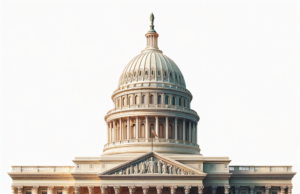Unveiling the Assault Weapon Ban: A Crucial Step Towards Safer Communities
In a significant move towards enhancing public safety, lawmakers have unveiled a comprehensive Assault Weapon Ban aimed at curbing the proliferation of military-style firearms in civilian hands. This legislative measure comes in response to growing concerns over gun violence and the devastating impact of assault weapons on communities across the nation. As the debate surrounding gun control continues to intensify, understanding the nuances of this ban is crucial for grasping its potential implications for American society.
Understanding the Assault Weapon Ban: Key Definitions and Contextual Background
The Assault Weapon Ban is a legislative initiative designed to prohibit the sale, transfer, manufacture, and importation of specific types of firearms classified as assault weapons. These typically include semi-automatic rifles, pistols, and shotguns that possess certain features such as detachable magazines, pistol grips, and folding stocks. The ban aims to restrict access to weapons that are often associated with mass shootings and high-casualty incidents. By establishing clear definitions and parameters, the legislation seeks to create a framework that enhances public safety while respecting the rights of responsible gun owners.
The Historical Context of Gun Legislation in the United States
Gun legislation in the United States has a complex and often contentious history, shaped by cultural, political, and social factors. The Second Amendment, ratified in 1791, has been interpreted in various ways, leading to ongoing debates about the balance between individual rights and public safety. The first significant federal gun control law, the National Firearms Act of 1934, aimed to regulate machine guns and sawed-off shotguns. Subsequent legislation, including the Gun Control Act of 1968 and the Brady Handgun Violence Prevention Act of 1993, further established regulations on firearm sales and ownership. However, the 2004 expiration of the previous Assault Weapons Ban highlighted the challenges of enacting lasting reforms in a polarized political landscape.
Analyzing the Impact of Assault Weapons on Community Safety and Crime Rates
Research indicates that assault weapons are disproportionately involved in mass shootings and violent crimes, raising alarms about their availability in civilian markets. Studies have shown that incidents involving assault weapons often result in higher casualty rates compared to those involving handguns or other firearms. Communities affected by gun violence frequently report feelings of insecurity and fear, which can lead to broader societal issues such as decreased economic activity and increased mental health concerns. By addressing the accessibility of these high-capacity firearms, the Assault Weapon Ban aims to mitigate the risks associated with gun violence and foster safer environments for all citizens.
Legislative Process: How the Assault Weapon Ban Was Formulated and Passed
The formulation of the Assault Weapon Ban involved extensive negotiations among lawmakers, advocacy groups, and stakeholders from various sectors. The process began with grassroots campaigns that highlighted the urgent need for reform in the wake of high-profile mass shootings. Lawmakers conducted hearings, gathered testimonies from survivors and experts, and analyzed data on gun violence to inform the drafting of the bill. After several revisions and amendments, the legislation was introduced in Congress, where it faced rigorous debate. Ultimately, bipartisan support emerged, leading to its passage in both the House and Senate, followed by the President’s signature, marking a pivotal moment in the ongoing fight for gun control.
Public Opinion and Advocacy: The Role of Communities in Supporting the Ban
Public opinion has played a crucial role in shaping the discourse surrounding the Assault Weapon Ban. A significant portion of the American population has expressed support for stricter gun control measures, particularly in the wake of tragic events linked to assault weapons. Advocacy groups, including grassroots organizations and national coalitions, have mobilized communities to voice their concerns and push for legislative action. Through rallies, social media campaigns, and educational initiatives, these groups have effectively raised awareness about the dangers posed by assault weapons, fostering a collective sense of urgency that has influenced policymakers to prioritize the ban.
Future Implications: What the Assault Weapon Ban Means for National Gun Policy
The passage of the Assault Weapon Ban is expected to have far-reaching implications for national gun policy and the broader conversation about gun control in the United States. It sets a precedent for future legislative efforts aimed at addressing gun violence and may inspire similar initiatives at the state and local levels. Additionally, the ban could lead to increased scrutiny of other firearm regulations, prompting discussions about background checks, safe storage laws, and the regulation of high-capacity magazines. As communities continue to grapple with the realities of gun violence, the Assault Weapon Ban represents a critical step towards fostering a culture of safety and responsibility in gun ownership.
The unveiling of the Assault Weapon Ban marks a pivotal moment in the ongoing struggle for gun control in the United States. By addressing the accessibility of high-capacity firearms, this legislation aims to enhance community safety and reduce the incidence of gun violence. As public opinion shifts and advocacy efforts gain momentum, the implications of this ban will undoubtedly resonate throughout the nation, shaping the future of gun policy and the collective pursuit of safer communities.
















